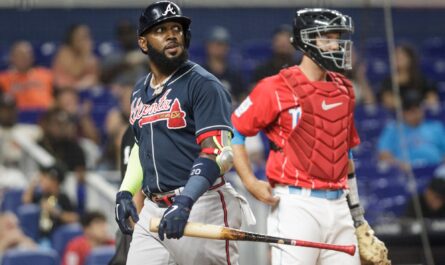It’s no secret the Tampa Bay Rays had a record low attendance for two consecutive playoff games, or have consistently been at the bottom of the league in attendance since their inception. But how is this still happening, and why are they building a new stadium at the same location their owner Stu Sternberg has publicly criticized in the past?
Well, last week’s attendance headlines has been years in the making and to nobody’s surprise it comes down to greed and money. While arguments can be made about ticket prices, time of day and location, I believe the root issue is much deeper. I believe much of this is the result of a strategic campaign to sink attendance in an effort to bolster public subsidies for a new stadium.
But how can that possibly make sense?
The Lease Agreement
In 1998, the Tampa Bay Devil Rays came into existence, marking the beginning of an exciting era for baseball fans. To accommodate the new franchise, a lease agreement was forged, allowing them to use a publicly owned stadium built back in 1990. This lease, which gave the team a place to call home, is still in effect and is scheduled to run until 2027.
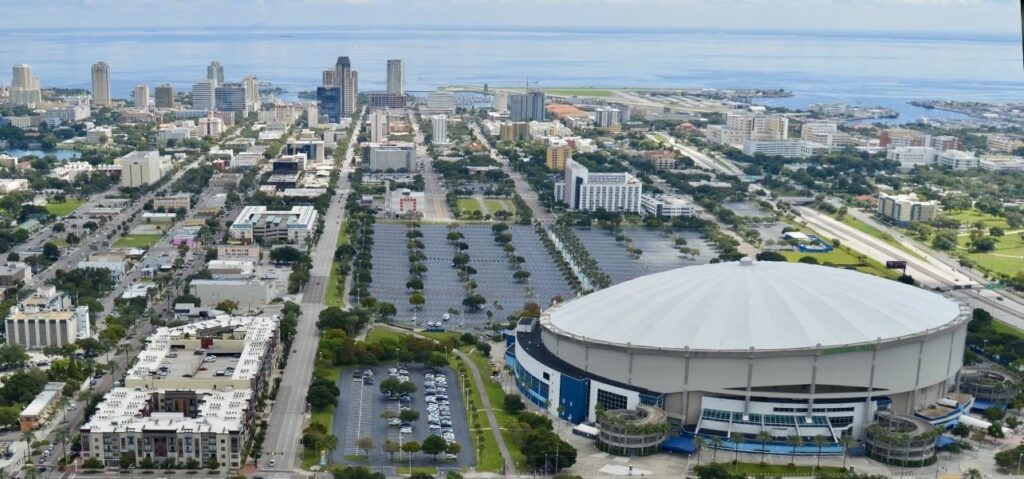
However, within this lease agreement, there’s an intriguing provision that only came to light after nearly two decades. According to this provision, the Rays are prohibited from engaging in negotiations with outside municipalities unless they obtain expressed written permission from the city of St. Petersburg. This single clause would become the foundation of a strategic plan that has plagued our the Rays fanbase for years.
Coming up Short
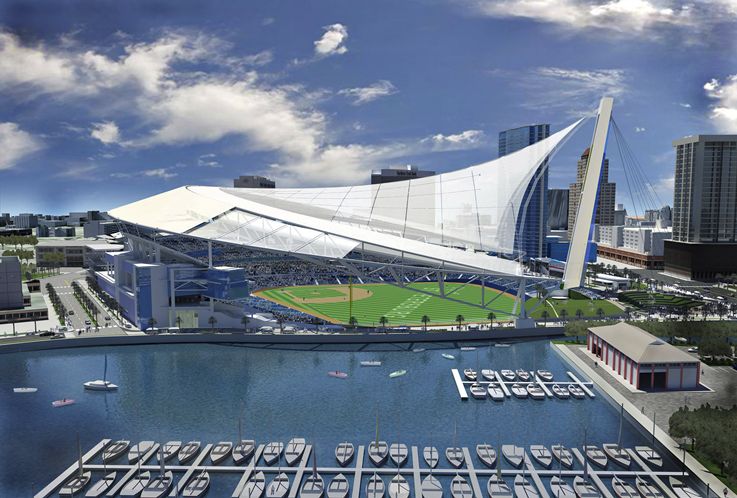
In 2007 the Rays ownership group led by Stu Sternberg began their push to build a new ballpark. With limited bargaining power and location restrictions, they began to find the city was unwilling to meet them financially and a number of proposed projects were struck down. These projects became so frequent at one point that many fans lost any confidence in an actual agreement being made. Even proposed projects which included private funding were met with financial barriers as the parties struggled to negotiate terms. Much of the frustration was at the hands of Sternberg who was unwilling to put up a reasonable share of the cost.
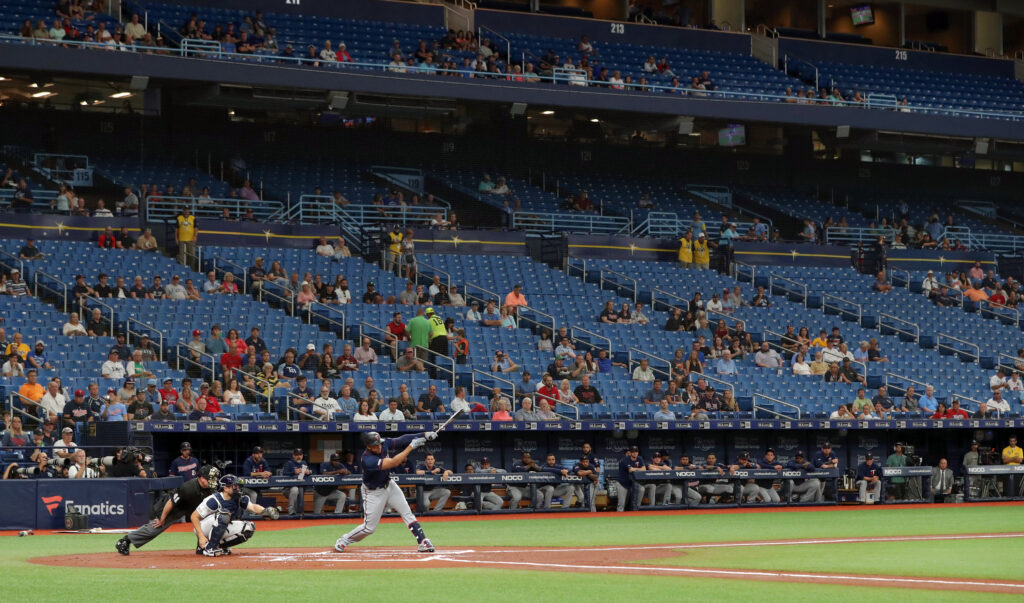
Don’t Make it Too Obvious
After finding success following the Rays historic 2008 World Series run, the organization was no closer to making a deal for a new ballpark. While this was expected, their next move to deliberately cut attendance was not. This is because above all else Sternberg is a business man and leveraging the income potential from ticket sales is worth it’s weight in gold if you can get a stadium out of it. So a plan was devised to make a bad situation worse in hopes the city of St. Petersburg would allow the Rays to negotiate with their neighbors across the bay. So the organization quietly began cutting programs aimed at boosting attendance. This meant that season ticket staff, in game entertainment, advertising promotions, and corporate sponsorship were all on the chopping block, but the Rays would do just enough to stay off the radar.
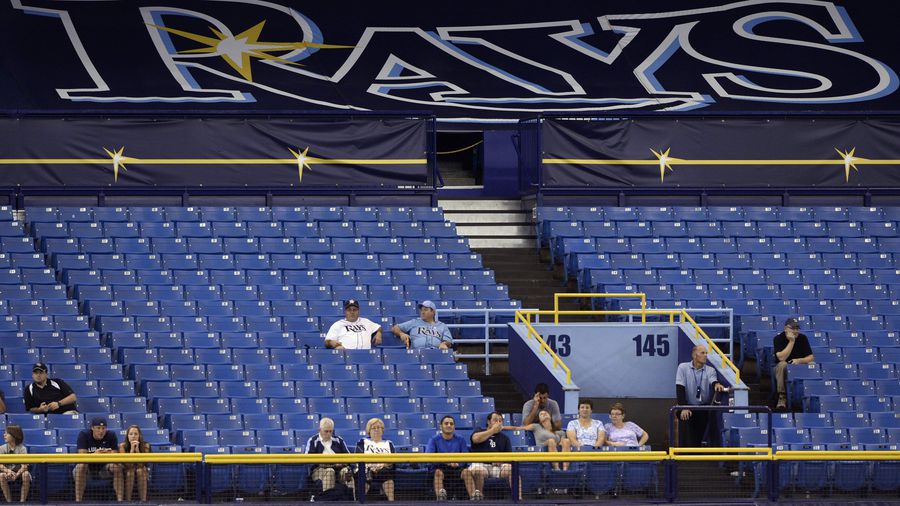
For fans who recall attending games between 2010 and 2019 Tropicana Field was just a desolate place to watch a ball game. From copyright free music between innings to having half the concessions being closed, it was a rough time for the few who would make out. During this time much of the upper deck was roped off and the cheapest tickets would start at $15 – $21. Considering other organizations such as the Rockies offer seats as low as $2 for the “Rockpile” this was unacceptable for an organization trying to build a fanbase. Moreover, programs such as the summer concert series and student ticket promotions were replaced for ones geared toward generating revenue such as $5 beer night and $2 hotdogs.
At the same time and just blocks away, massive redevelopments began popping up as an entire revitalization of the surrounding area began taking shape. Downtown St. Pete’s population began to grow substantially but little was being done by the organization to capitalize on the new market. These efforts were clearly intentional.
Phase II
Just as the Rays began to see record lows in attendance starting with the 2015 season, the organization began the second phase of their plan. This meant convincing the city of St. Petersburg to permit negotiations with other cities in the Tampa Bay area at the threat of leaving. This plan ultimately worked and 2018 a new round of stadiums were proposed on Tampa’s side of the bay. The most practical being a modern glass domed park located in Tampa’s historic Ybor City.
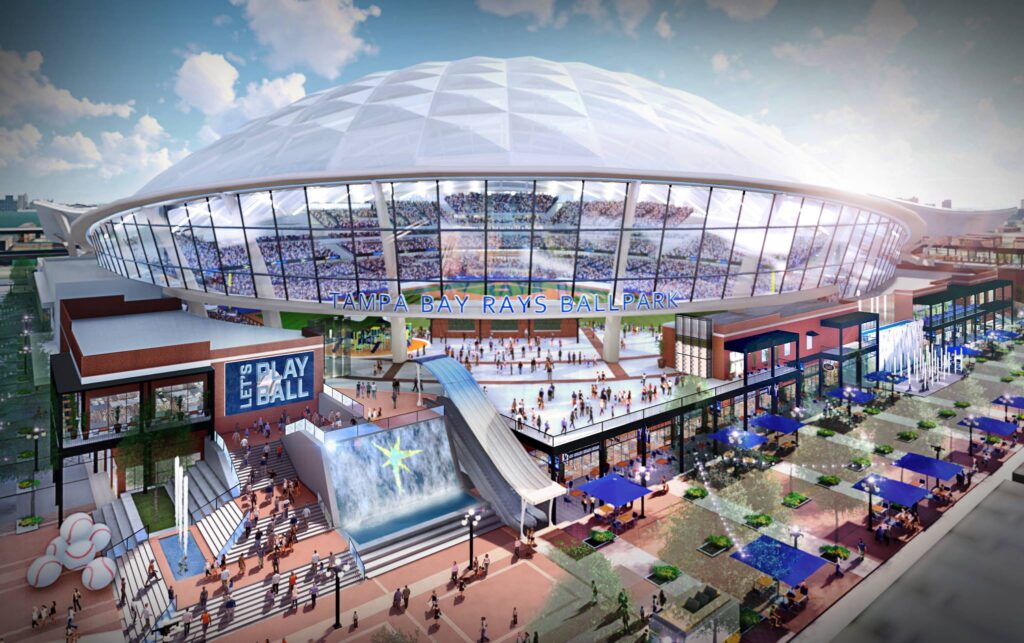
While the proposal’s marketing looked great there were many details yet to be negotiated before the Rays decided to go public with their pitch. Furthermore, it was made abundantly clear that public subsidies in Tampa’s Hillsborough county were to be extremely limited due to prior commitments with the Buccaneers and Lightning. These statements made by city officials seemed to fall on deaf ears as the Rays decided they would proceed with their press event. This stadium being the first of it’s kind in Tampa created quite the buzz, but when officials brought up the required infrastructure upgrades before ground could even be broken, the plan was vacated.
With few options and an owner unwilling to put up his own money Sternberg pitched a plan to move the team to Montreal as a split city organization. This allowed for two stadiums of smaller stature to be constructed, two separate broadcast deals, and two geographic fanbases. From an ownership perspective, this would increase the value of the organization ten fold but create a number of logistics issues for players and staff. Ultimately, MLB released a statement barring the proposed venture as it would create too many issues for the league.
Time to Sell
With time running out on the teams existing lease in 2027 and a new negotiating angle, Sternberg and the Rays made a last pitch to the city of St. Petersburg. The proposed plan would build a new domed stadium and entertainment district on the existing site of Tropicana Field, set to open in 2028. After months of negotiations and rumors of the team leaving for another city such as Nashville, the Rays put the city of St. Petersburg and Pinellas county in a tough position. They either pay their share of the proposed stadium or lose the team to another market. So on September 19th, 2023 the Tampa Bay Rays announced that a deal was tentatively made to build a $1.3 billion stadium with the city and county splitting a share of $600 million.
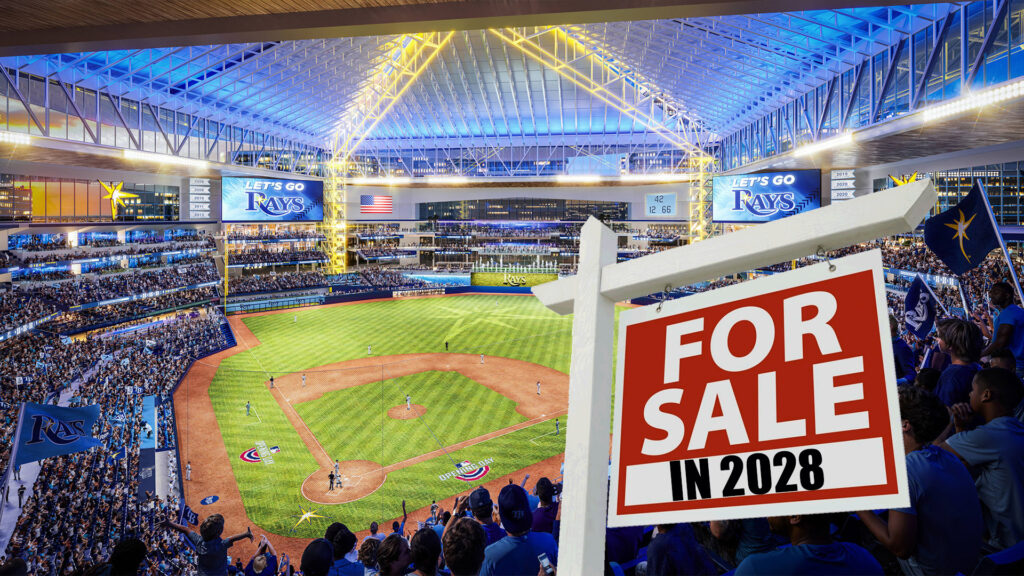
While the initial reaction was relatively positive the reality was a new stadium was being built on the same site all of their attendance problems derived from. That’s when it set in that this move was not made to benefit the ballclub but rather increase the value of the organization. With an inflated value the ownership group can look to sell their share of the franchise and figuratively pocket the public subsidy money. This is the unfortunate realty that Rays fans such as myself will soon experience. What we can only hope for is that a local individual or group steps in to purchase the franchise and does a complete overhaul of their marketing. The organization, following the stadium deal has pushed to bring back a number of programs in an effort to bolster attendance in 2023, but it appears to be too little too late.
An Uphill Battle
After years of fan neglect and geographic barriers, the Rays have faced challenges attracting a consistent fan base. But while the location is not ideal, with the right moves an organization can make it work. Contrary to popular belief, Tampa Bay does have fans but over the years many of them have been eradicated with poor organizational management. Furthermore, while the city of St. Pete has gone through a massive overhaul, the immediate area around the stadium doesn’t make it much of a destination. Something that is imperative for a small market team like the Rays. The upside is the population is growing and transportation infrastructure is getting better. Pinellas county home to the current and future site of the Rays boast the highest population density in Florida at 3,425 people per square mile. With that said there is no excuse why new ownership can’t capitalize on this fact and why they cant incentivize the Tampa market to cross the bridge on occasion. This by any means won’t be an easy task but the numbers are there to make it work if someone is willing to try.
Conclusion
The Tampa Bay Rays’ prolonged struggle with attendance issues has been a result of complex maneuvering rooted in financial interests and strategic planning. The organization’s efforts to secure public subsidies for a new stadium, despite the limitations imposed by their lease agreement, have been evident in their actions. From deliberately cutting attendance-boosting programs to pursuing negotiations with other cities, the Rays’ quest for a new stadium has often overshadowed their commitment to their fan base.
As the team prepares to build their new stadium on the current Tropicana Field site, it becomes increasingly clear that the primary goal is to enhance the franchise’s value. While this may benefit the ownership group, it leaves long-time fans disheartened from the years of neglect and in bad faith stadium negotiations. The hope now rests on the possibility of local individuals or groups stepping in to purchase the franchise and revitalize its marketing efforts.
The challenges of attracting a consistent fan base persist, but the potential is there with a growing population and proposed site redevelopments. This is why it’s imperative new ownership rebuild the team’s connection with its fans and make Tampa Bay a thriving baseball market. With this outlook the Rays have an opportunity to create a brighter future, provided they prioritize their fans and embrace the evolving dynamics of the region.


